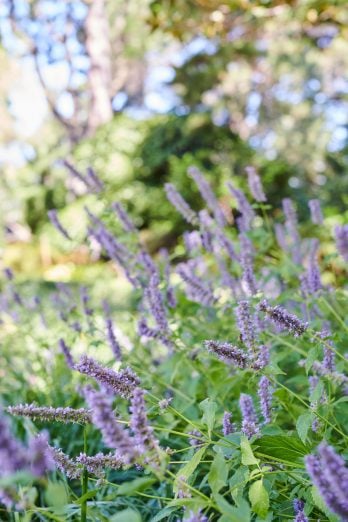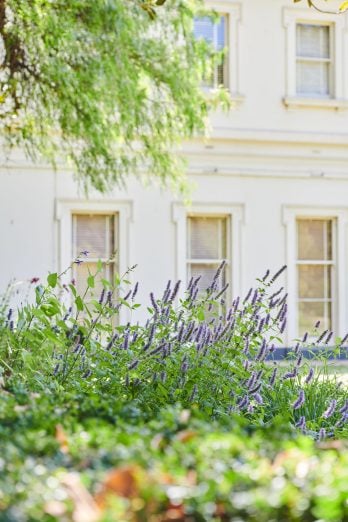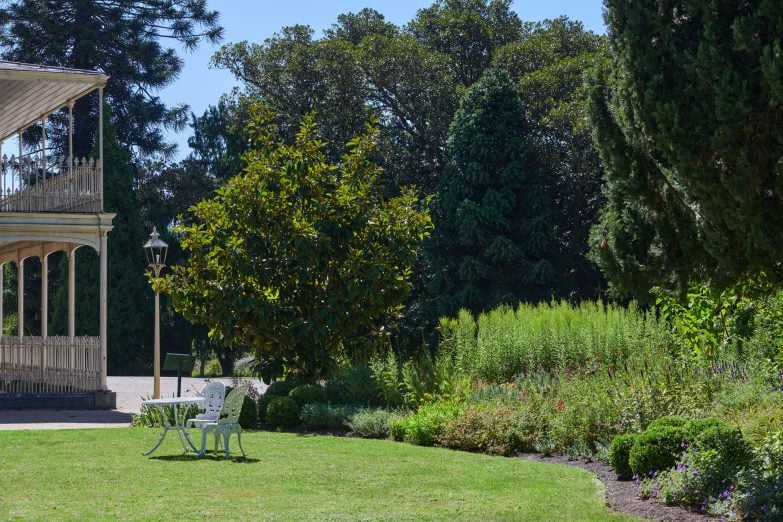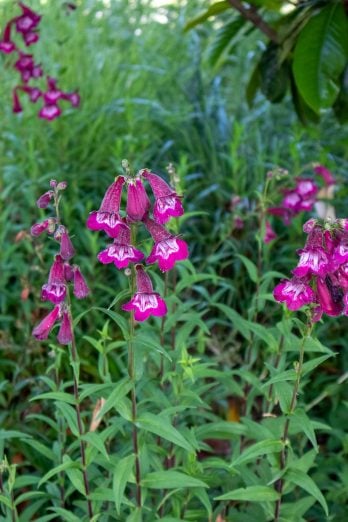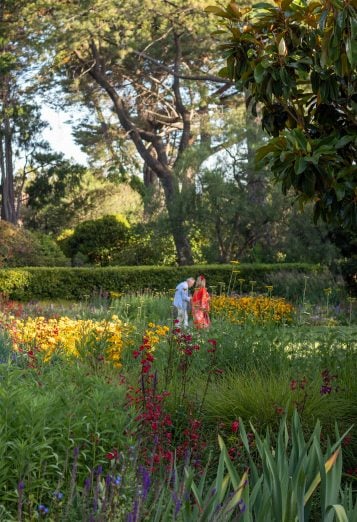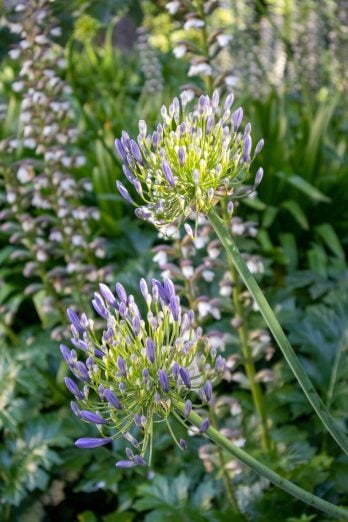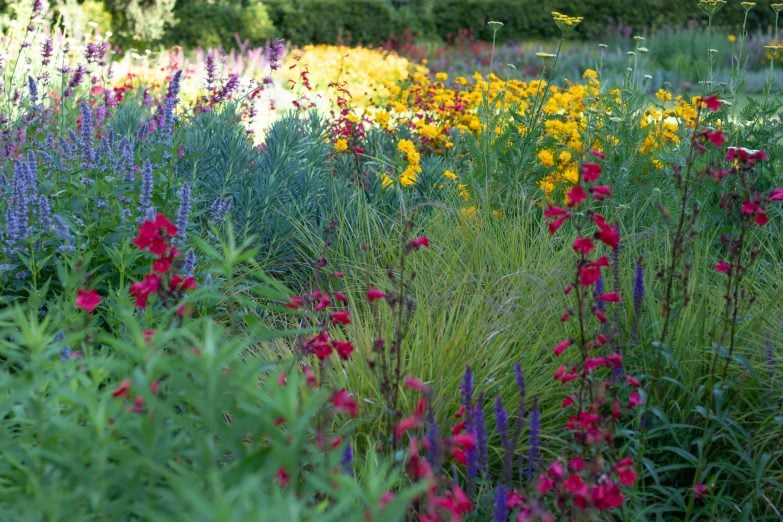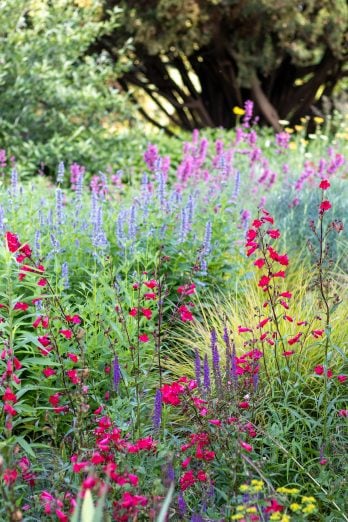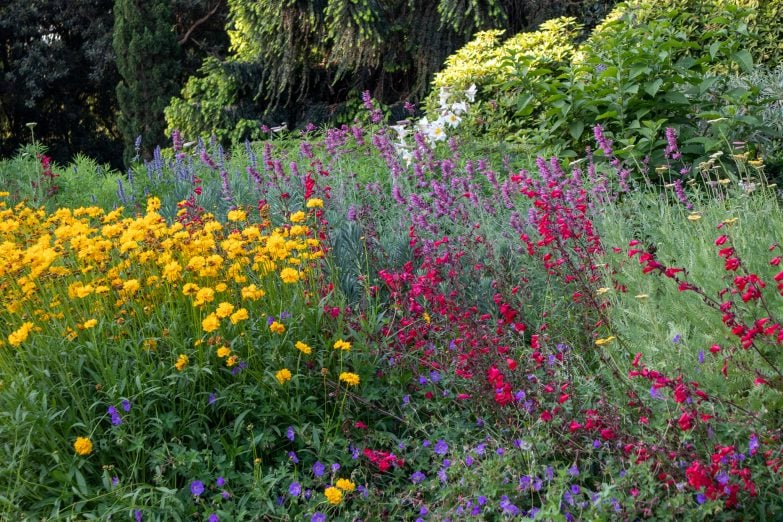Renowned designer and Como Ambassador Paul Bangay has worked with the National Trusts’ garden team and designed an interpretation of a classic perennial border, befitting a garden of the scale and significance of Como.
This article was first published in the National Trust of Australia (Victoria) Magazine (Spring 2022 issue)
“Gardens evolve”, insists Paul Bangay, “I don’t think they should be frozen in time”.
How then does Australia’s foremost contemporary garden designer approach the restoration of the famous gardens at Como, one of National Trust’s signature properties, that have stood overlooking Melbourne’s Yarra River since 1847?
In regular demand to design gardens all around the world, Paul is also a National Trust ambassador, so when approached to consider revitalising Como, his response was immediate and enthusiastic. “Creating a garden around the fabric of an old building is exactly what I love doing”, he tells me from his home in the magnificent English Cotswolds, one of the true Meccas of gardeners worldwide.
But, at Como, as Paul was to discover, it was a case of not so fast.
The fact that Como’s original design had been laid out by the famous Victorian Colonial landscaper William Sangster was of little help, as his early plans had been lost, along with the defining perennial border and any sense of the garden’s original form. All in all, says Paul, the gardens were “in a pretty bad way. There were no real records of what was there.”
However, the National Trust were able to come to the party by producing the original plant list, as well as – intriguingly – a catalogue from the now long-vanished nursery that first supplied it. This, along with a set of Sangster’s notes penned in 1862, provided Paul with a starting point.
As much as Paul might have wished to create a completely original vision for Como, his design would be tempered by parameters set by the organisation overseeing the historical aspects of the project, Heritage Victoria. “I could dream up what I liked”, he says, “but many people would be visiting the gardens to get a sense of what it was like a century or so ago, so we had to work very closely with Heritage Victoria”.
Paul’s vision, therefore, would need to meld the past with the present.
Formal gardens such as Como have evolved considerably from their original purpose as a testament to man’s ability to tame – even conquer – nature, a notion stretching back to the days of Capability Brown. In today’s more appreciative attitude, the natural elements are encouraged to thrive, even dominate the garden itself. Paul’s solution to this conundrum was to re-establish Como’s important perennial border, but with a modern touch. “We had to respect that it is a Victorian house, and that people are coming here to see what it would have looked like back then”, he says, “but we softened it by the curving and enlarging of the garden beds.”
Even if Paul had intended to simply replicate what had gone before, some of Como’s past could simply not be revived. Like nearly everything else, gardens have historically been subject to the whims of fashion, and some of Como’s original plants, such as the Salvias, simply no longer existed.
“When this happened”, says Paul, “we always tried to find the genus of the original to retain the same look and feeling, and there was a good deal to-ing and fro-ing as to what could and could not be used. I think we met somewhere in the middle.”
Some customs of those venerable old gardeners have nevertheless earned Paul’s gratitude. The Victorians, he explains, were inveterate collectors of just about everything, trees being no exception, and a range of Como’s original trees still thrive, such as a particularly fine Araucaria, or Bunya Pine, collected in the 1800s from Queensland, and which continues to draw the curiosity of visitors to the property today.
After laying out his initial design, Paul was ably aided by National Trust’s Garden’s Manager, Justin Buckley, who undertook meticulous research, exhaustive plant gathering and liaising closely with Heritage Victoria to achieve the balance between old and new.
The project took three months for approval, then another three for Paul’s small but dedicated team to create, working with the National Trust garden team and Como volunteers, ending in a result with which Paul is more than happy.
“There will be growth and colour all year round”, says Paul, “even in Winter. My aim was to provide people with four reasons to visit Como: Spring, Summer, Autumn and Winter.”
Como House & Gardens are open daily, with guided tours of the house offered on select days. Click here for more information.
Written by Michael Veitch
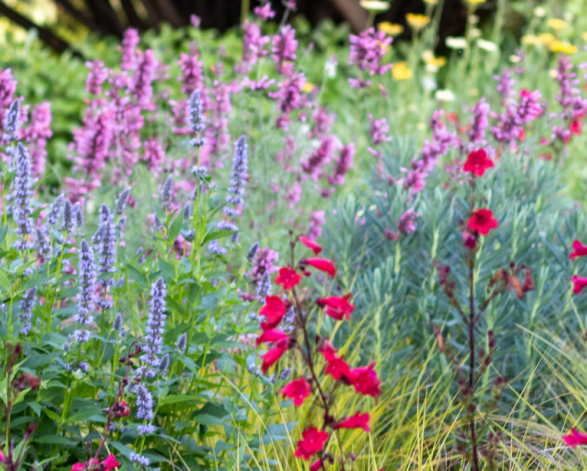
 Twitter
Twitter Facebook
Facebook Linkedin
Linkedin Email
Email